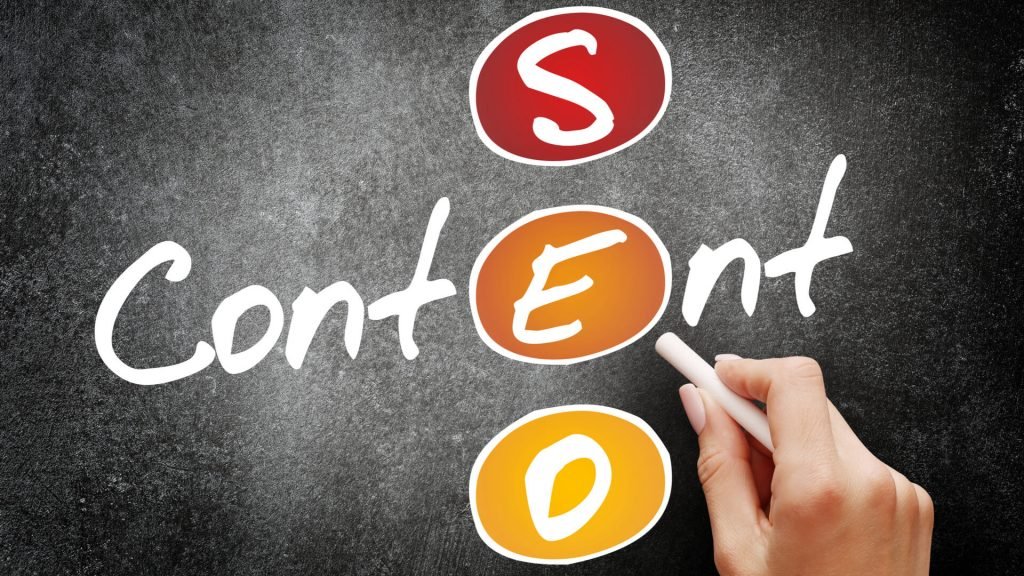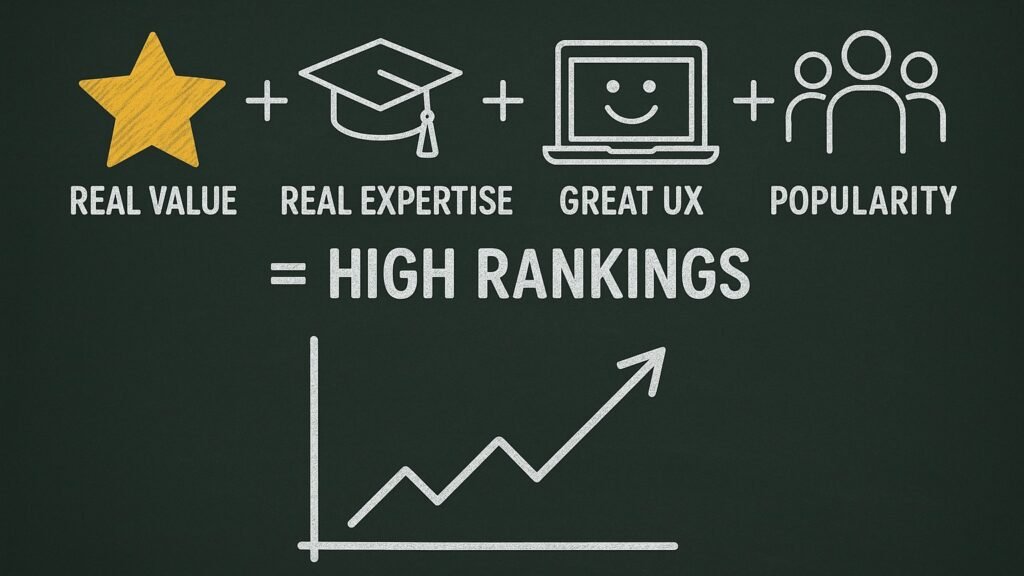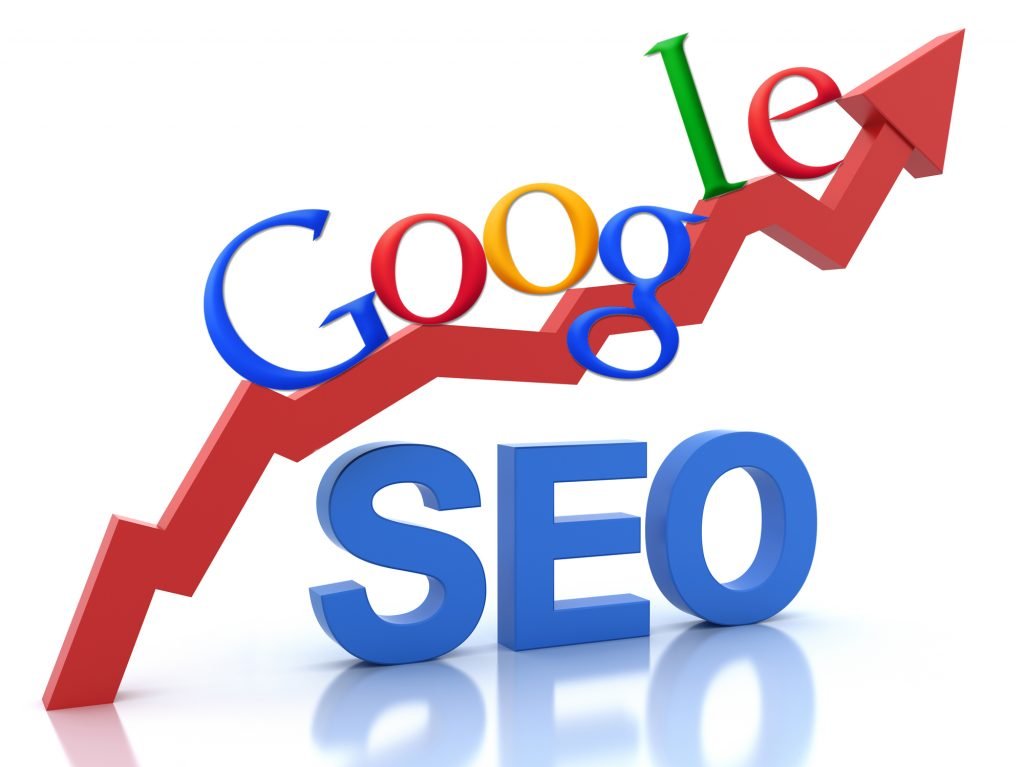
On-Page SEO
We offer comprehensive on-page SEO services to boost your site’s visibility, rankings, and traffic. Partner with us for results that matter.
We understand that a great website is more than just a beautiful design; it also needs to be easily found by your ideal customers. A strong online presence is essential for long-term business success, after all.
We specialize in on-page SEO, which is the process of optimizing individual web pages to rank higher and earn more relevant traffic in search engines. Our on-page SEO services are a core part of our comprehensive digital marketing solutions, designed to help businesses like yours gain a competitive edge.
On-page SEO is called “on-page” because the tweaks and changes you make to optimize your website can be seen by visitors on your page (whereas off-page and technical SEO elements aren’t always visible).

What Is On-Page SEO?
Why is on-page SEO important?
On-page SEO is important because it tells Google all about your website and how you provide value to visitors and customers. It helps your site be optimized for both human eyes and search engine bots. Merely creating and publishing your website isn’t enough — you must optimize it for Google and other search engines in order to rank and attract new traffic.
Every part of on-page SEO is completely up to you; that’s why it’s critical that you do it correctly. Now, let’s discuss the elements of on-page SEO.

the Top On-Page SEO Elements
- Website’s hierarchy
- Page structure
- Page H1 Heading Title
- High-Quality Page Content
- H2-H6 Headings
- UX & UI
- Meta Title & Description
- Internal Linking
- Mobile Responsiveness
- Image Alt-text
- Structured Markup
- Open Graph & other tags
- Page URLs
Keyword Research and Strategic Implementation
We believe that every successful SEO campaign starts with a solid understanding of your audience. Therefore, our process begins with thorough keyword research. We identify the specific terms and phrases your potential customers are using to find products or services like yours. Then, we don’t just find these keywords; we analyze search intent, competitive landscape, and long-tail opportunities to build a strategic plan.
After that, we thoughtfully integrate these keywords into your website’s content. We ensure they flow naturally, so the content remains valuable and readable for human visitors. We will also help you avoid keyword stuffing, which can harm your rankings and create a poor user experience.
Competitor Research
Well, to get ahead, you also need to know what your competitors are doing. We conduct a thorough analysis of your top competitors’ on-page SEO strategies. We look at their keyword usage, content structure, and overall content strategy to identify opportunities for you. We can uncover what is working for them and, more importantly, what they are missing.
By the way, this analysis helps us to build a better strategy for your website. It allows us to pinpoint what it takes to outrank them and capture their organic traffic.
Market Research
Market research goes beyond just your direct competitors. We take a deeper look at the entire landscape of your industry. We identify emerging trends, shifting user behaviors, and the broader context of your market. This helps us ensure that your content and keywords are not just relevant today but also ready for the future.
This process helps us find untapped opportunities and develop a content strategy that makes you a true authority in your niche. After all, if you want to be a market leader, you must offer content that is more comprehensive and valuable than what’s currently available.
Optimizing Your Website’s Hierarchy and Page URLs
A well-structured website is a major part of effective on-page SEO. We design a logical and intuitive site hierarchy that helps both users and search engines navigate your content effortlessly. We create a clear path from your homepage to your most specific pages, a process often referred to as “siloing.” This ensures that valuable information is easy to find, and link equity is distributed effectively throughout your site.
Furthermore, we believe that a well-crafted URL is important for both search engines and users. We optimize your page URLs to be clean, simple, and descriptive. We make sure they include a primary keyword when possible, and they are easy for users to remember and understand. For instance, a URL like example.com/on-page-seo-services is far more effective than example.com/page-id?12345.
Crafting a Strategic Page Structure and Headings
The layout of your page plays a huge role in user engagement and search engine crawling. We ensure every page has a single, clear H1 Heading Title, which serves as the primary title of the page and a signal of its main topic. This title is not just for search engines; it immediately tells the user what the page is about.
Then, we use a logical hierarchy of H2 to H6 Headings to break down the content into easily digestible sections. This makes the content scannable for users and helps search engines understand the relationships between different topics on the page. We use these headings to organize complex ideas into bite-sized chunks, guiding the reader through the information smoothly.
Developing High-Quality Page Content
A website with high-quality content is essential for attracting organic traffic. We specialize in enhancing your existing content to be more relevant and authoritative. We’ll identify content gaps and opportunities to create new, engaging, and comprehensive articles, blog posts, and service pages. We also ensure your content provides real value to your audience, answering their questions and solving their problems.
Moreover, our content strategy is built on the principles of E-E-A-T (Experience, Expertise, Authoritativeness, and Trustworthiness). We focus on creating content that demonstrates real-life insights and showcases your brand as a leader in your field. This helps build a deeper emotional connection with the reader and improves your standing with search engines.
Enhancing User Experience (UX) and User Interface (UI)
User experience (UX) and user interface (UI) are becoming increasingly important for SEO. We work to ensure your website is not only beautiful but also intuitive and easy to use. A positive user experience leads to lower bounce rates, longer dwell times, and higher engagement, all of which are positive ranking factors. We focus on clear calls to action, easy navigation, and a visually appealing layout. We also pay close attention to Core Web Vitals, which are a set of metrics from Google that measure a page’s loading speed, interactivity, and visual stability.
Optimizing Meta Title and Description
Metadata is the unseen but vital part of your website’s on-page SEO. We craft compelling Meta Titles and Descriptions for each page, which are the snippets that appear in search results. These tags not only include important keywords but are also written to entice users to click on your link. We treat them as a mini-advertisement for your page, carefully considering every character to maximize click-through rates and manage user expectations.
Building a Strategic Internal Linking Structure
A well-organized internal linking structure is like a roadmap for both search engines and users. We create a strategic internal linking plan that connects your pages logically. This helps search engines crawl and index your site more effectively. It also passes link authority—or “link equity”—to your most important pages, helping them rank higher.
We’ll ensure that the anchor text used for these links is descriptive and keyword-rich, providing additional context about the linked page. This improves navigation for your visitors and strengthens your site’s overall authority.
Ensuring Mobile Responsiveness
With more and more people searching on their phones, a responsive design is no longer optional. We make sure your website is mobile-friendly. We ensure your site looks great and functions perfectly on all devices, from desktops to smartphones. We optimize for fast loading on mobile networks and ensure all interactive elements are easy to tap on smaller screens. This is crucial for reaching a wider audience and providing a smooth user experience.
Optimizing Image Alt-Text
Images are a key part of your website, but search engines can’t “see” them. We optimize all images on your website with descriptive Image Alt-Text. This not only helps search engines understand the context of your images but also improves accessibility for users who rely on screen readers. It’s an opportunity to provide a text alternative for the visual content, making your site more inclusive and improving its visibility in image search results.
Implementing Structured Markup
We implement Structured Markup, also known as schema, on your website. This code helps search engines understand the context of your content, leading to rich snippets and a more prominent display in search results. We use schema to highlight key information like product details, reviews, business hours, and frequently asked questions, giving your site a competitive advantage and a more professional appearance in search results.
Using Open Graph and Other Tags
We also optimize your website for social media sharing. We implement Open Graph and other social tags to control how your page appears when shared on platforms like Facebook, Twitter, and LinkedIn. This ensures your content is presented with a compelling title, image, and description, which can increase engagement and traffic from social channels. It’s an easy way to maintain brand consistency and make your content more shareable.

On-Page SEO Checklist
- Crawl your website.
- Conduct an SEO audit and define your site architecture.
- Update URLs, page titles, and meta descriptions.
- Make sure your keyword is in your URL.
- Include your keyword throughout your page.
- Track keywords and topics for each page.
- Don’t keyword stuff.
- Establish value propositions for each page.
- Define your target audience.
- Plan new page titles.
- Add new meta descriptions.
- Review and edit page content as needed.
- Incorporate visual content.
- Optimize your visual content.
- Add internal links.
- Add external links.
- Optimize for conversions.
Our Commitment to Your Growth
We believe in a hands-on, transparent approach. Our team works closely with you to create a customized on-page SEO strategy that aligns with your business objectives. We provide regular reports and insights, so you always know how your website is performing and what we’re doing to improve it. We also stay on top of the latest algorithm updates to ensure your strategy remains effective and a step ahead of the competition.
Regardless of your industry or business size, we are committed to helping you achieve lasting online success. We’ve seen firsthand how a well-optimized website can transform a business. We’re excited to show you the difference our expertise can make.
Remember that Google’s standards are constantly changing. That is because user behavior and expectations are always changing, too, and Google needs to keep up to stay relevant.
And so do you.
So, are you ready to take your online presence to the next level? Get in touch with us today to start your journey toward higher rankings and more organic traffic. We’re here to help you grow.

What is on-page SEO?
On-page SEO (also known as “on-site SEO”) is the practice of optimizing web page content for search engines and users. Common on-page SEO practices include optimizing meta tags, headers, content, images, internal links and URLs.
Why is on-page SEO important?
On-page SEO is crucial because it gives us direct control over how well our website performs in search engines. By optimizing the content and technical elements of a page, we can make it more relevant and valuable to both users and search engines. It’s the foundation for all other SEO efforts, and without it, even great off-page strategies won’t be as effective. It’s about providing the best possible user experience from the moment someone clicks on your search result.
What opportunities does on-page SEO offer to my business?
The biggest opportunity with on-page SEO is attracting highly qualified organic traffic. When we rank for keywords your ideal customers are searching for, we’re not just getting clicks—we’re getting people who are actively looking for your products or services. It also helps us establish your brand as an authority in your industry, build trust with your audience, and ultimately increase conversions and revenue.
What are the key elements of on-page SEO?
On-page SEO involves a lot of moving parts. It includes things like keyword research, crafting high-quality content, and optimizing your page titles and meta descriptions. We also focus on technical elements like page URLs, heading tags (H1-H6), internal linking, image alt-text, and structured markup. Each of these elements works together to create a comprehensive and powerful optimization strategy for every single page on your site.
What’s the difference between on-page and off-page SEO?
That’s a great question. The difference is pretty straightforward. On-page SEO is everything we do on your website to improve rankings, from the content to the code. Off-page SEO, on the other hand, is everything we do off your website to build authority. The most common off-page tactic is building high-quality backlinks from other reputable sites. On-page is about relevance, while off-page is about trust and authority. They are both essential for a successful SEO campaign.
How is on-page SEO different from technical SEO?
On-page SEO focuses on the content and elements on a specific page, like headings and text. Technical SEO, however, focuses on the backend and overall structure of your website. This includes things like site speed, crawlability, and mobile-friendliness. Both are critical for a healthy and high-ranking website, and we address both in our services.
How long does it take to see results from on-page SEO?
While we often see initial improvements in a few weeks, significant and lasting results can take anywhere from three to six months. It really depends on your industry, the competitiveness of your keywords, and your current website authority. We are in this for the long term with you, focused on building sustainable growth.
Is on-page SEO all I need to rank on Google?
On-page SEO is a crucial part of a comprehensive strategy, but it’s not the only piece of the puzzle. Off-page SEO, which includes building backlinks and mentions on other websites, is also essential. Technical SEO, which focuses on your site’s overall health and performance, is also a key factor. We offer a full suite of services that work together to maximize your online presence.
How often should I update my website’s content?
We recommend a regular schedule for content updates. It’s not just about creating new content; it’s also about refreshing existing pages to ensure they are current, accurate, and optimized for new keywords. We will work with you to create a content calendar that keeps your site fresh and engaging for both users and search engines.